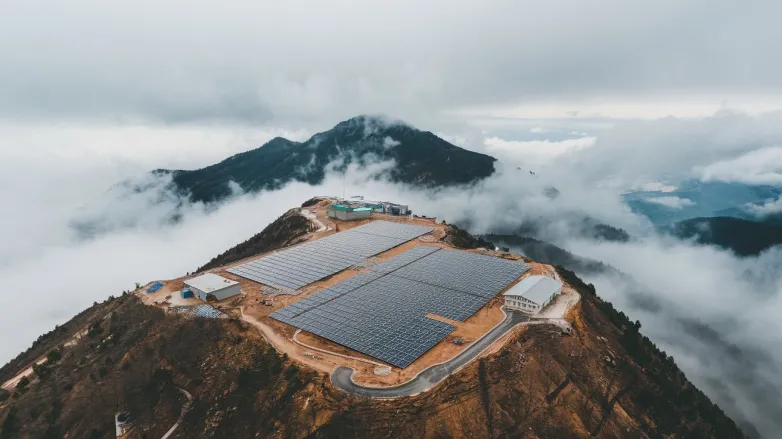World's Highest Solar Station Goes Live in Yunnan
- Rising above the clouds, the Huaneng Nagu Solar Power Station harnesses the sun at 5,300 meters, promising cleaner energy for 52,000 households and a greener planet.

The Huaneng Nagu Photovoltaic Power Station in Yunnan Province, China, has become the world's highest solar power project after its first phase was connected to the state grid. Situated at altitudes of 4,800 to 5,300 meters, the facility comprises 32 photovoltaic array zones equipped with about 200,000 dual-glass bifacial panels.
Once fully operational, this phase is projected to generate an average of 158 million kWh annually, sufficient to meet the electricity needs of 52,000 households. The initiative is set to save 47,400 tons of standard coal and reduce carbon dioxide emissions by 124,000 tons each year, contributing significantly to clean energy efforts.
What impact will the Huaneng Nagu Solar Power Station have on renewable energy generation?
The Huaneng Nagu Solar Power Station is poised to have a considerable impact on renewable energy generation, particularly in the following ways:
- Enhanced Energy Production: With the ability to produce an estimated 158 million kWh annually, the project stands to significantly bolster the local energy supply, increasing the proportion of renewable energy in China's overall energy mix.
- Reduction in Fossil Fuel Dependency: The yearly savings of 47,400 tons of standard coal not only diversifies the energy portfolio but also indicates a move away from fossil fuel reliance, reinforcing the domestic commitment to cleaner energy sources.
- Carbon Emission Mitigation: By cutting down carbon dioxide emissions by 124,000 tons annually, the solar power station contributes to China's efforts in fulfilling international climate agreements and targets aimed at reducing greenhouse gas emissions.
- Promotion of High-Altitude Solar Technology: As the world's highest solar power project, it may serve as a model for future high-altitude solar installations, paving the way for utilizing untapped solar potential in mountainous and elevated regions.
- Job Creation and Economic Development: The construction and operation of the solar power station could generate jobs in the renewable energy sector, stimulating local economies and promoting the green energy job market.
- Stimulating Technological Innovation: The unique challenges posed by high-altitude operations may foster innovation in solar technology, including advancements in panel efficiency and resilience in extreme weather conditions.
- Local Energy Independence: By generating substantial renewable energy locally, the project can enhance energy security for communities, reducing their vulnerability to energy supply disruptions.
- Inspiring Further Renewable Initiatives: The success of the Huaneng Nagu project may inspire other regions and countries to invest in renewable energy, demonstrating the feasibility and advantages of large-scale solar installations.
- Integration with Smart Grids: This project could facilitate the development of smart grid technologies that optimize the distribution and usage of generated energy, improving overall efficiency and sustainability.
- International Collaboration Opportunities: With its groundbreaking achievements, the project may attract international attention and partnerships, fostering collaboration in renewable energy technologies and strategies across borders.
- Awareness and Education: The visibility of such a significant renewable energy project can help raise awareness about solar energy's benefits, encouraging public and governmental support for future renewable energy initiatives.
Overall, the Huaneng Nagu Solar Power Station not only represents a milestone in renewable energy generation but also has the potential to influence broader trends in energy policies, technology advancements, and community resilience.
Also read

